Geeta placed three objects made of different materials as shown in the figure. She observed a bright spot of light at (II) but (III) would not get any spot. Then-

(I) and (II) are made of transparent materials and (III) is made of opaque material.
(I) is made of transparent material, (II) is made of translucent material and (III) is made of opaque material.
(I) is made of transparent material, (II) is made of opaque material and (III) can be made of either transparent or opaque or translucent material.
(I) and (II) are made of opaque material and (III) is made of transparent material.
The correct Answer is:C
Transparent material allows light to pass through it and opaque object obstructs it.
Related Playlists
- BOOK - SCIENCE OLYMPIAD FOUNDATION CHAPTER - LIGHT, SHADOWS AND REFLECTIONS EXERCISE - ACHIEVERS SECTION (HOTS)5videos
LIGHT, SHADOWS AND REFLECTIONS
- BOOK - SCIENCE OLYMPIAD FOUNDATION CHAPTER - FUN WITH MAGNETS EXERCISE - ACHIEVERS SECTION (HOTS)5videos
FUN WITH MAGNETS
- BOOK - SCIENCE OLYMPIAD FOUNDATION CHAPTER - MOTION AND MEASUREMENT OF DISTANCES EXERCISE - ARCHIEVERS SECTION (HOTS)4videos
MOTION AND MEASUREMENT OF DISTANCES
Similar Practice Problems
- Question 1 - Select One
A convex lens is made up of three different materials as shown in the figure. For a point object placed on its axis, the number of images formed are
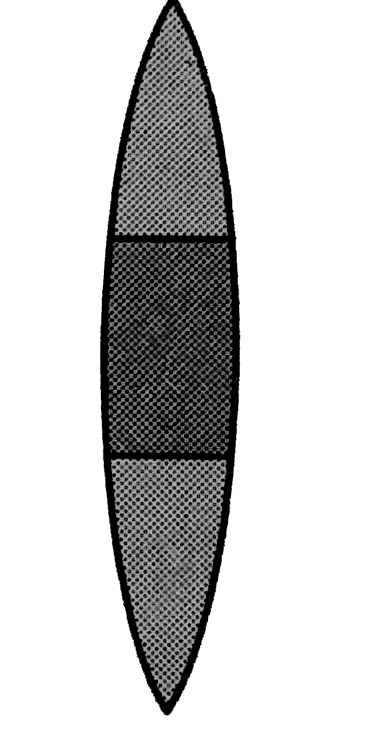 A1B5C4D3
A1B5C4D3 - Question 1 - Select One
A convex lens is made up of three different materials as shown in the figure. For a point object placed on its axis, the number of images formed are
 A1B5C4D3
A1B5C4D3 - Question 1 - Select One
A point source S is placed at the bottom of different layers as shown in figure. The refractive index of bottom-most layer is μ0. The refractive index of any other upper layer is
μ(n)=μ0−μ04π−18 where n=1,2,.....
A ray of light starts from the source S as shown. Total internal reflection takes place at the upper surface of the layer having n equal to
 A3B5C4D6
A3B5C4D6 - Question 1 - Select One
A student performs an experiment on finding the focal length of a convex lens by keeping a lighted candle on one end of laboratory table, a screen on its other end and the lens between them as shown in the figure. The positions of the three are adjusted to get a sharp image of the candle flame on the screen.
If now the candle flame were to be replaced by a distant lamp on a far away electric pole, the student would be able to get a sharp image of this distant lamp on the screen by moving :
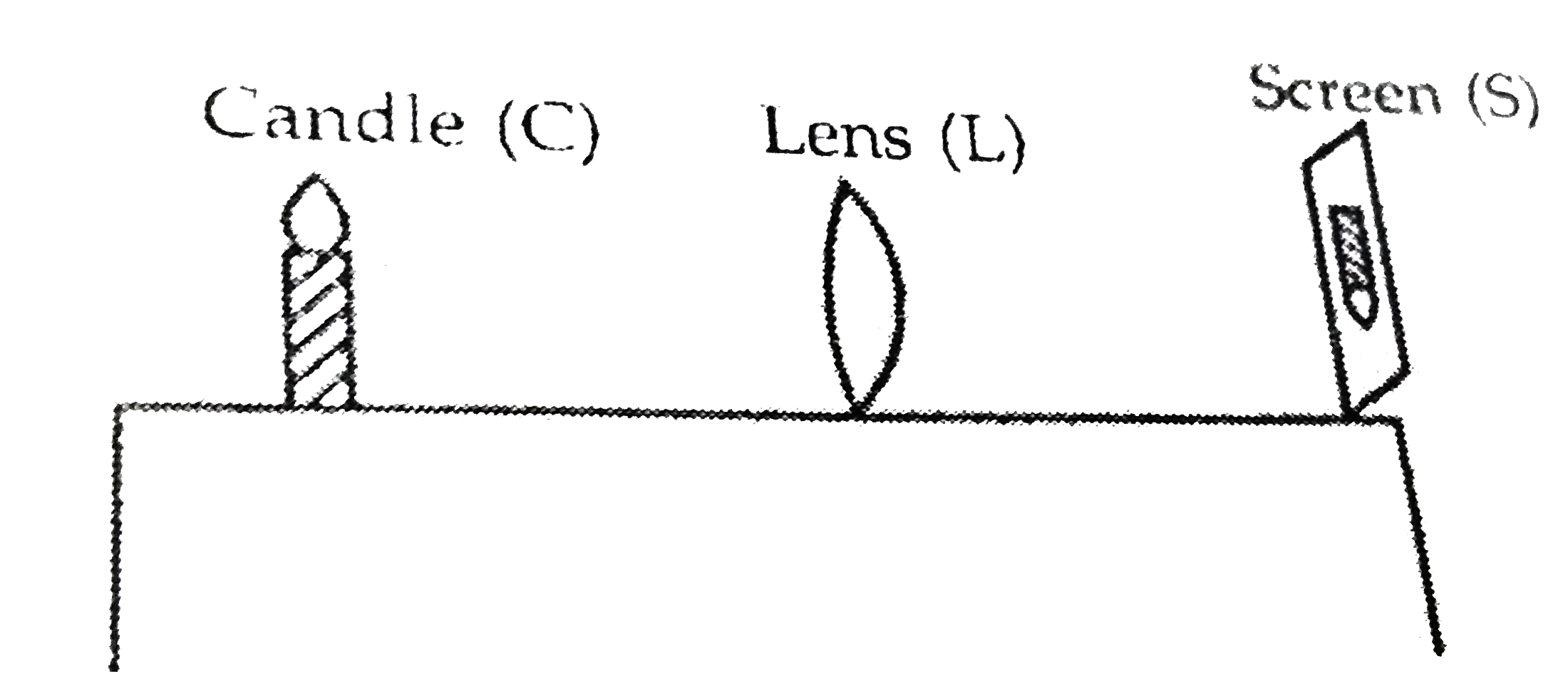 Athe screen in the direction of the lens or the lens in the direction of the screenBthe screen in the direction of the lens or the lens away from the screenCthe screen away from the lens or the lens in the direction of the screenDneither the screen not the lens.
Athe screen in the direction of the lens or the lens in the direction of the screenBthe screen in the direction of the lens or the lens away from the screenCthe screen away from the lens or the lens in the direction of the screenDneither the screen not the lens. - Question 1 - Select One
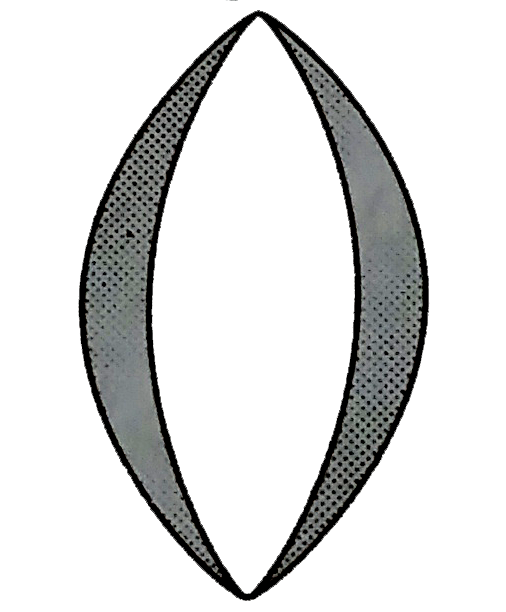
A convex lens is made of 3 layers of glass of 3 different materials as in the figure. A point object is placed on its axis. The number of images of the object areA3B4C1D2 - Question 1 - Select One
A student performs an experiment on finding the focal length of a convex lens by keeping a lighted candle on one end of laboratory table, a screen on its other end and the lens between them as shown in the figure. The positions of the three are adjusted to get a sharp image of the candle flame on the screen.
If now the candle flame were to be replaced by a distant lamp on a far away electric pole, the student would be able to get a sharp image of this distant lamp on the screen by moving :
 Athe screen towards of the lens or the lens towards the screen.Bthe screen towards of the lens or the lens away from the screen.Cthe screen away from the lens or the lens towards the screen.Dneither the screen nor the lens
Athe screen towards of the lens or the lens towards the screen.Bthe screen towards of the lens or the lens away from the screen.Cthe screen away from the lens or the lens towards the screen.Dneither the screen nor the lens - Question 1 - Select One
Consider an evacuted cylindrical chamber of height h having rigid conducting plates at the end and an insulting curved surface as shown in the figure. A number of spherical balls made of a light weight and soft material and coated with a conducting material are placed on the bottom plated. The balls have a radius r << h. Now a high voltage source (HV) is connected across the conducting plates such that the bottom plate is at +V0 and the top plate at –V0. Due to their conducting surface, the balls will eventually collide with the top plate, where the plate and are repelled by it. The balls will eventually collide with the top plate, where the coefficient of restitution can be taken to be zero due to the soft nature the material of the balls. The electric field in the chamber can be considered to be that of a parallel plate capacitor. Assume that there are no collisions between the balls and the interaction between them is negligible. (Ignore gravity)
Which one of the following statements is correct?AThe balls will stick to the top plate and remain thereBThe balls will bounce back to the bottom plate carrying the same charge they went up withCThe balls will bounce back to the bottom plate carrying the opposite charge they went up withDThe balls will execute simple harmonic motion between the two plates - Question 1 - Select One
Consider an evacuted cylindrical chamber of height h having rigid conducting plates at the end and an insulting curved surface as shown in the figure. A number of spherical balls made of a light weight and soft material and coated with a conducting material are placed on the bottom plated. The balls have a radius r << h. Now a high voltage source (HV) is connected across the conducting plates such that the bottom plate is at +V0 and the top plate at –V0. Due to their conducting surface, the balls will eventually collide with the top plate, where the plate and are repelled by it. The balls will eventually collide with the top plate, where the coefficient of restitution can be taken to be zero due to the soft nature the material of the balls. The electric field in the chamber can be considered to be that of a parallel plate capacitor. Assume that there are no collisions between the balls and the interaction between them is negligible. (Ignore gravity)
The average current in the steady state registered by the ammeter in the circuit will beAzeroBProportional to the potential _V0Cproportional to V3/20Dproportional toV20
Similar Questions
Two slits are made on an opaque surface at a separation of 1 mm from each other. A screen is placed at a distance 1 m from the plane of the slits. A small hole is made on the screen at a distance 1 mm from the centre of the screen as shown in the figure. If we observe the light coming out from hole on the other side, then which wavelengths in the visible region will be absent and which will show strong presence ? Wavelength of visible light ranges from 400 nm to 700 nm.
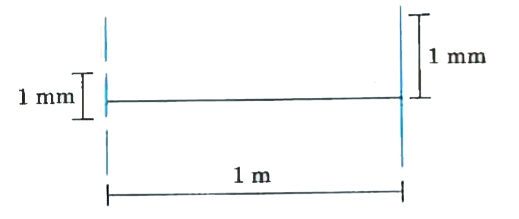 View Solution
View SolutionA coil Q is connected to low voltage bulb B and placed near another coil P as shown in the fiugre. Give reasons to explain the following observations :
(a) The bulb 'B' lights.
(ii) Bulb gets diameter if the coil Q is moved towards left.
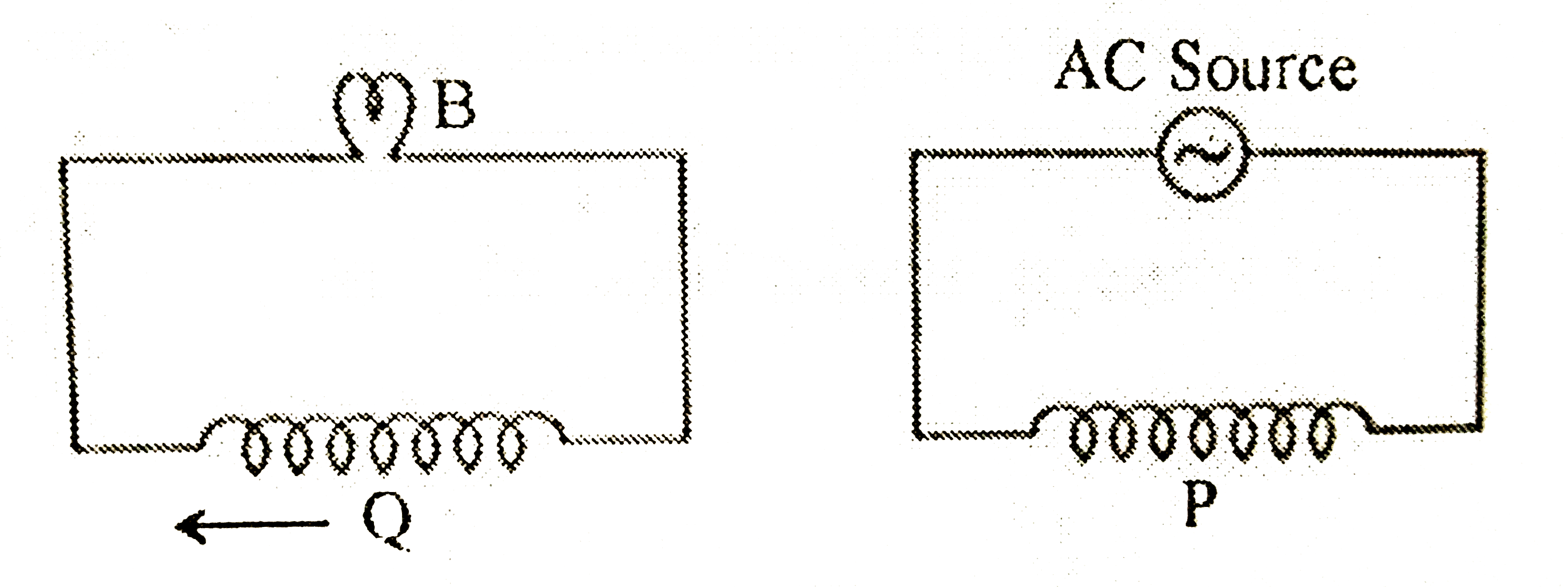 View Solution
View Solution

